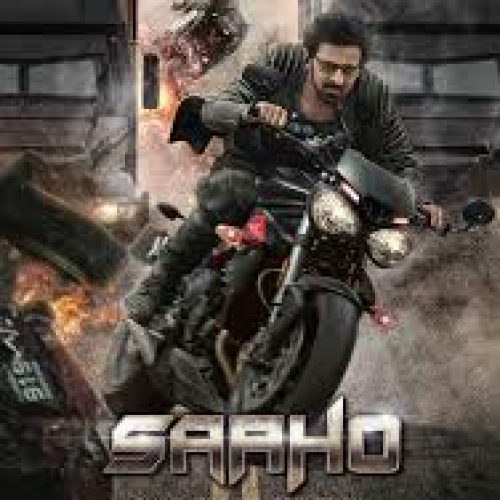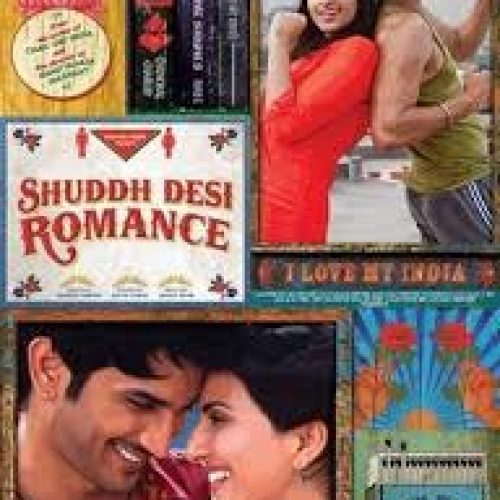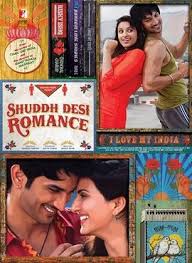In the heart of Udaipur, a love story begins with a spark that promises to be both tender and turbulent. Starring Janhvi Kapoor and Ishaan Khatter, Dhadak is a romantic drama set in the vibrant landscapes of Rajasthan. Directed by Shashank Khaitan, this 2018 film is a Hindi adaptation of the critically acclaimed Marathi film Sairat, bringing its raw energy and intense themes to a wider audience. The genre is a mix of romance and drama, but the story explores deeper societal issues like class divide, honor, and the pressures of familial duty in a modern Indian setting.
The film follows the lives of two young lovers—Parthavi (played by Janhvi), a wealthy and headstrong girl from a powerful political family, and Madhukar (played by Ishaan), a carefree boy from a middle-class family who works in his family’s restaurant. Their love blossoms amidst the narrow lanes and lakeside charm of Udaipur, but their romance faces insurmountable hurdles because of their caste and social differences. As their families oppose the relationship, the two are forced to flee, embarking on a journey that tests their love and resilience. What begins as a sweet teenage romance quickly becomes a battle for survival in a world that refuses to accept their bond.
One of the standout elements of the film is the acting. Janhvi, in her debut role, brings a natural charm and innocence to Parthavi, though there are moments where her inexperience shows. Despite that, she manages to hold her own, especially in the more emotionally charged scenes. Ishaan, however, is the heart of the film. His portrayal of Madhukar is full of youthful energy and vulnerability. He seamlessly transitions from the carefree boy in love to a man grappling with the harsh realities of life. The chemistry between the two leads is palpable, and their performances anchor the film even when the script wavers. Ishaan’s expressive eyes and body language do much of the heavy lifting, conveying the complexity of emotions his character experiences throughout the story.
From a directorial perspective, Shashank Khaitan does a commendable job of balancing romance with the film’s more serious themes. He ensures that the film remains visually appealing, with the first half brimming with colorful depictions of Udaipur’s culture, architecture, and landscape. The second half of the film shifts to a more somber and realistic portrayal, reflecting the change in tone as the protagonists face life in a big, unfamiliar city. The contrast in settings highlights the shift in the characters’ emotional journeys, and this shift is captured effectively through the lens of cinematographer Vishnu Rao. The lakes, palaces, and crowded streets of Udaipur in the first half are replaced with the gritty streets of Kolkata in the second, marking the couple’s harsh transition from love to survival.
Musically, the soundtrack composed by Ajay-Atul, who also scored Sairat, is one of the film’s high points. The songs are melodious and impactful, particularly “Zingaat,” which is a lively, upbeat track that has been reimagined in Hindi. “Pehli Baar” captures the innocence and thrill of young love, while the title track, “Dhadak,” is a soulful ballad that lingers long after the credits roll. The background score complements the narrative well, heightening the emotional stakes at key moments without overpowering the scenes. The music serves not just as a backdrop but as an emotional pulse that ties the film together.
The cinematography by Vishnu Rao deserves special mention, especially in the way it captures the contrasting moods of the film. The sweeping shots of Udaipur with its lakes, grand palaces, and bustling streets imbue the first half with a sense of freedom and romance. In contrast, the second half, which is set in Kolkata, is marked by a grittier, more claustrophobic visual style. The cinematography effectively mirrors the changing emotional landscape of the characters—open and free at the beginning, and increasingly trapped and desperate as the story progresses. The color palette also shifts from warm and vibrant hues in Udaipur to colder, muted tones in Kolkata, visually reinforcing the couple’s difficult journey.
Where Dhadak falters slightly is in its screenplay and the handling of its themes. While the film is engaging, it doesn’t delve as deeply into the caste and class issues as Sairat did. The Hindi adaptation softens the rawness and intensity of the original, focusing more on the romance than the social commentary. The tension between the couple’s families, though ever-present, doesn’t feel as menacing or as urgent as it should have, considering the stakes involved. This dilutes the impact of the story’s central conflict. While the love story between Parthavi and Madhukar is compelling, the film misses an opportunity to fully explore the darker, more brutal realities of the caste system and its consequences, leaving the emotional depth of the film somewhat shallow in comparison to its source material.
That being said, Dhadak does succeed in evoking strong emotions through its portrayal of young, passionate love and the struggles that come with defying societal expectations. The film touches on the universal theme of love against all odds, and while it doesn’t quite pack the same punch as Sairat, it still resonates with its audience, particularly in its exploration of the innocence and impulsiveness of first love. The film’s pacing is mostly effective, though the second half feels a bit rushed as it navigates the couple’s transition to a new life.
In conclusion, Dhadak is a visually stunning and emotionally charged film that succeeds in portraying the innocence of young love, but falls short in delivering the same intensity as its predecessor. The performances by Ishaan and Janhvi are commendable, with Ishaan standing out as the film’s emotional core. The music and cinematography elevate the film, making it a visual and auditory treat. However, the film’s lighter treatment of caste dynamics and its overemphasis on romance may leave some viewers wanting more in terms of depth and social critique. Nevertheless, for fans of love stories and those looking for a blend of drama and romance with a dash of melodious music, this one is worth a watch. If you’re seeking a more hard-hitting take on the themes of love and class conflict, you might find Dhadak lacking the same impact as Sairat, but it still holds its own as a Hindi romantic drama.







